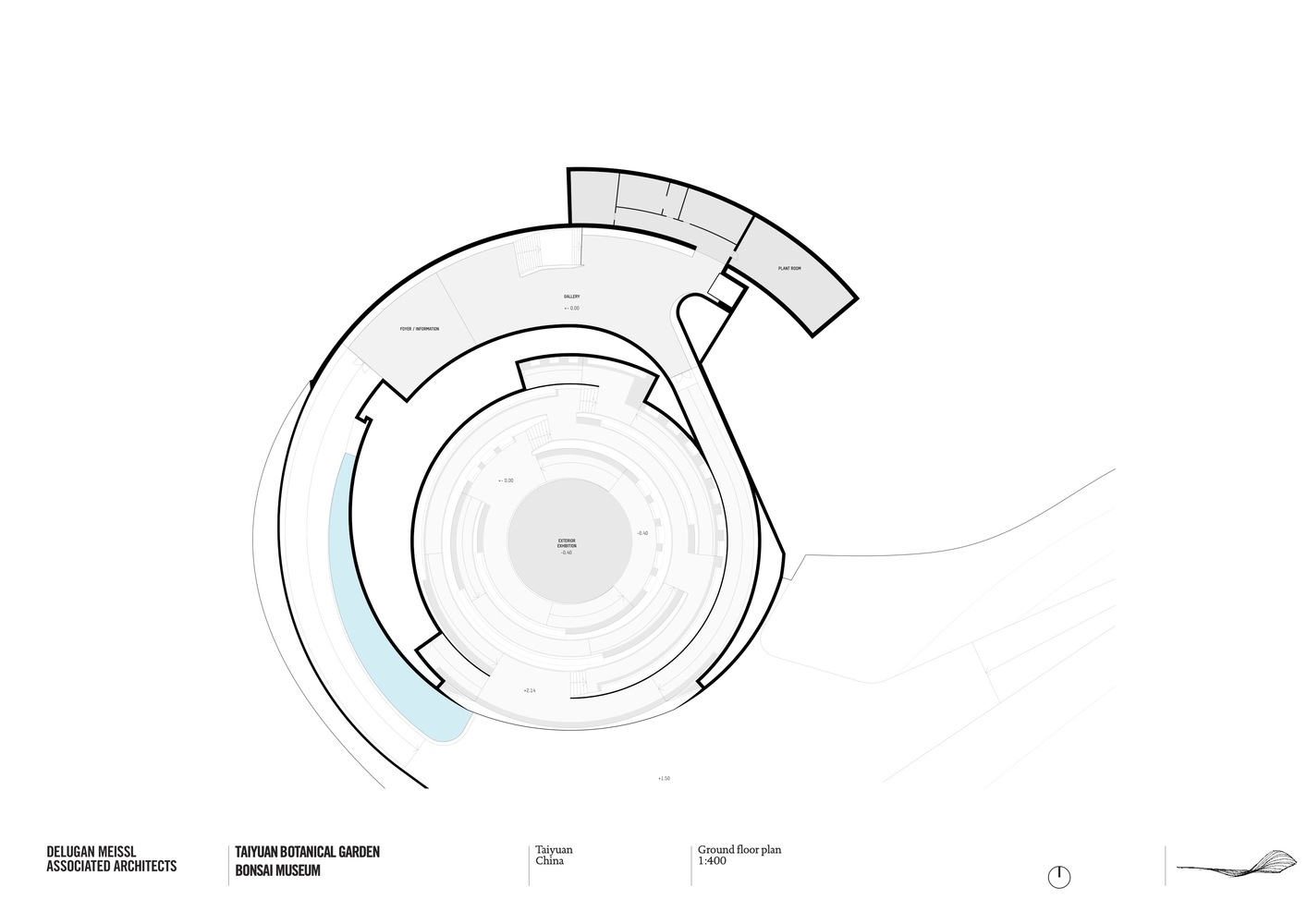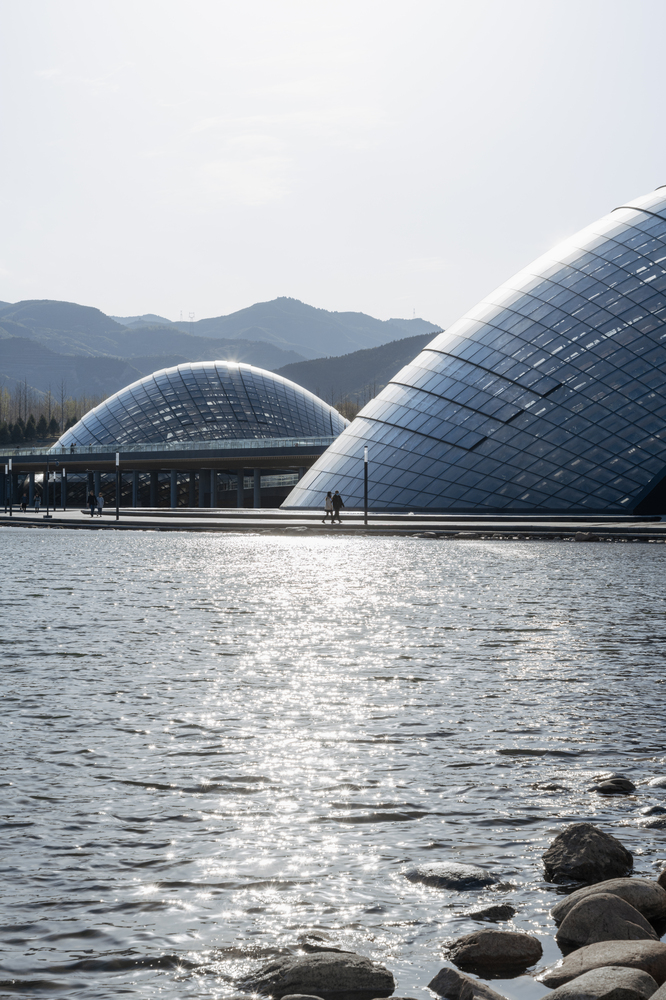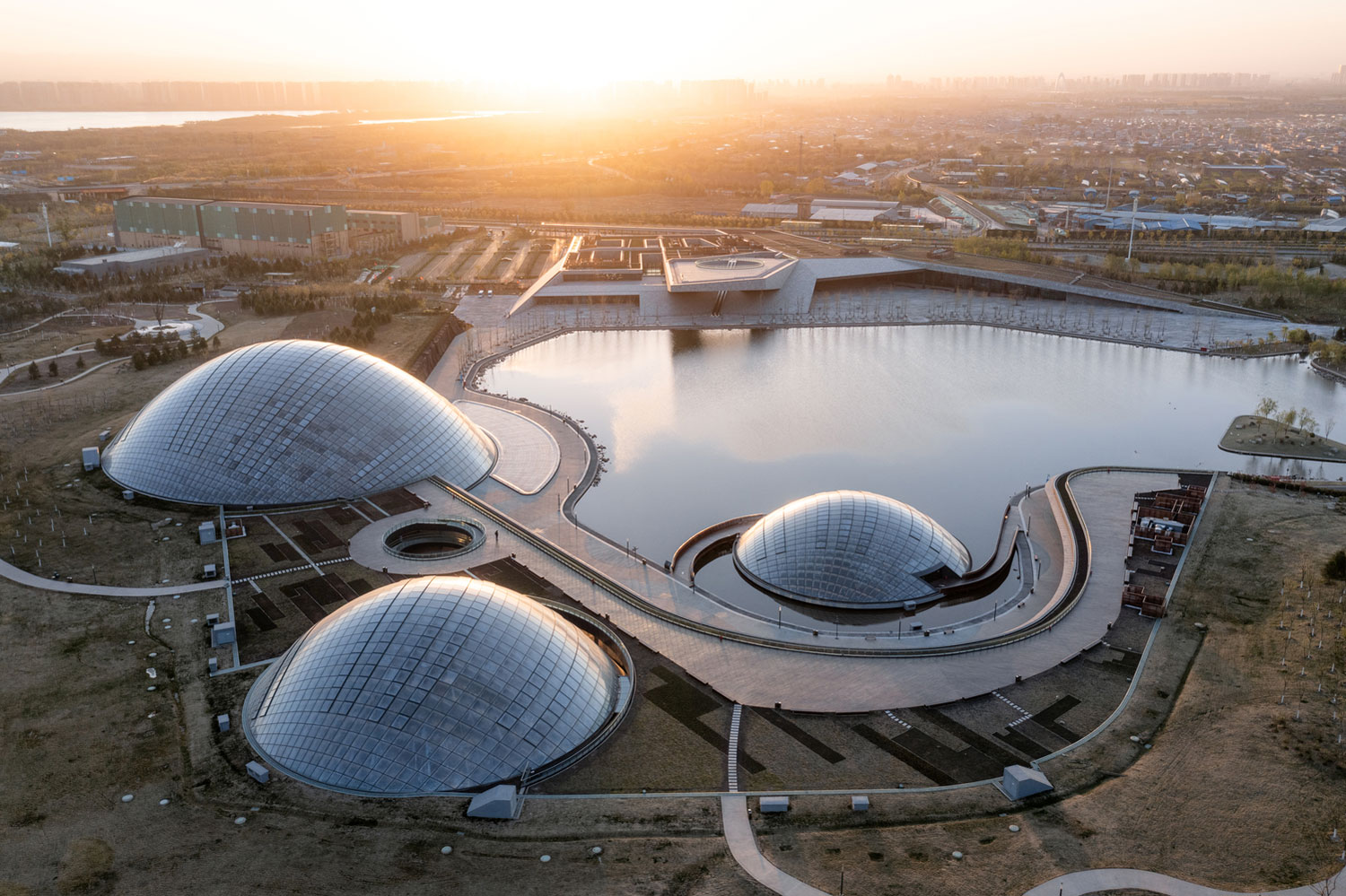Taiyuan Botanical Garden, by Delugan Meissl Associated Architects, was initiated to fulfill the desire of transforming a former coal-mining area into a landscape park that functions not only as an essential model for landscape design but also provides access and information about natural ecosystems by including a building infrastructure that can be used for research. In other words, the building behaves like an interface between architecture and landscape. The project encompasses constructing a central entrance structure with a nature museum and administrative facilities, three greenhouses, a restaurant, a bonsai museum, and a connected research center with a library and staff housing.
Learn parametric design and computational tools from the pioneers of the industry at the PAACADEMY:
The three hemispherical timber lattice domes of greenhouses are the project’s focal point. They are precisely fitted into the topography and intrigue people’s curiosity to visit the building. These domes vary in diameters and height. The biggest of the three domes, with a free span of almost 90 meters, is one of the world’s most giant timber lattice constructions. All the domes are comprised of intersecting layers of double-curved laminated timber beams. To generate a structurally varying opacity that maximizes solar gain, the primary beams are tightly packed on the north side of the foundation and spread to the south. Due to the massive use of wood in this project, prefabrication and high-quality execution are enabled.
Moreover, the greenhouses’ construction necessitated the collaboration of experts in energy design, thermal performance, structural integrity, glass, and assembly and logistics. To minimize the ecological footprint successfully, detailed knowledge of local climatic conditions, thermal demands, structural efficiency, and adequate constructional resources was crucial.
The entrance of Taiyuan Botanical Garden provides visitors with an access road that passes through a large courtyard and leads visitors to a large roof terrace. The entry is promoted through a circular opening in the slab to experience the whole surrounding visually. Besides, the cantilevered viewing platform towers above the park’s central water feature lead visitors to the three greenhouse domes.
Equally important, the concentric circles of the bonsai museum’s terraces serve as the structural underpinning for this accurate display of an ancient Far Eastern component of Garden Art. Visitors follow a trail that symbolizes the concept of a domesticated natural landscape. The base of the bonsai museum reacts dynamically with the simulated topography of the terrain and the surface of the pool, just like the gigantic domes of the greenhouses.
The project strives to honor the traditional Chinese timber roof structures by reinterpreting their structural and mathematical logic and taking them as the motivational source for the design’s sculptural articulation. Uniquely, the restaurant and tea house are excellent examples of using piled and interlaced load-bearing layers to create steps and scale experiments with proportional connections between structure and space.
The landscape park’s sculptural modeling, which merges organically with the built infrastructure, depicts the constant interplay between inside and out and the architecturally sophisticated articulation of the architecture-landscape interface.
© Photos are courtesy of CreatAR




























































Leave a comment